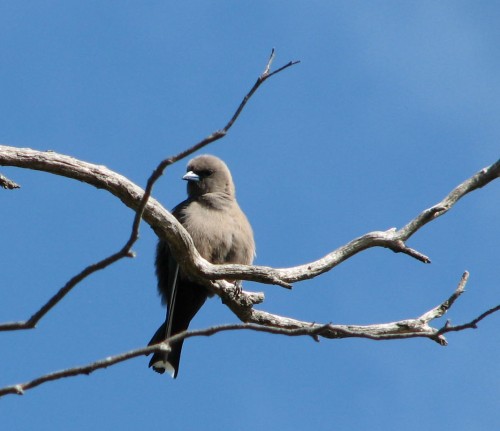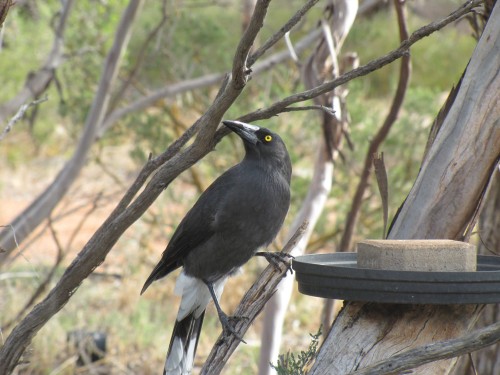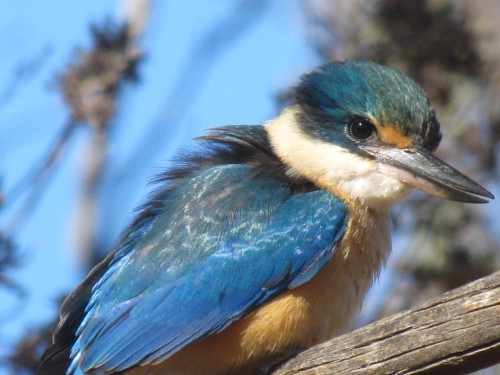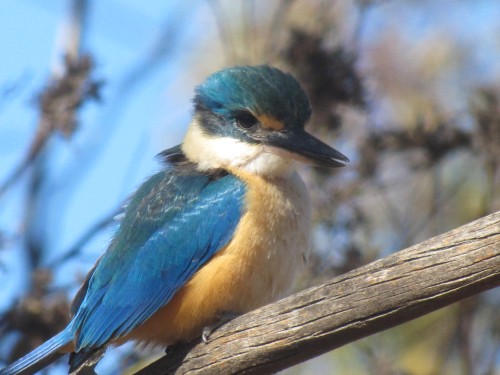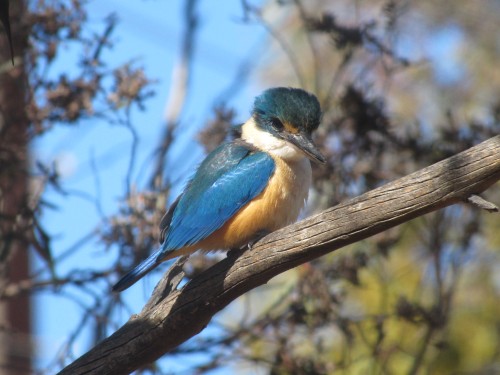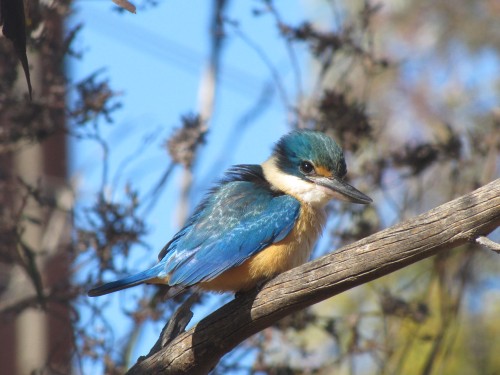Early morning birding walk
I went for an early morning walk today. It was an enforced walk: I had just taken our car to local garage for a regular service and check up. I could have asked my wife to pick me up in her car but she was still in bed. Despite the early hour, the air was already quite warm and I could understand why most of South Australia has had fire bans issued for the day. Our first burst of hot weather for the summer promises to be a good one. Time to hunker down and do some indoor things. Like reading. Or writing this post.
On my morning walk I was aware of the vast amount of activity on the part of the birds. My walk took exactly 28 minutes to complete and I saw or heard most of the locally resident species along the way, including large numbers of Galahs. The highlight of the walk was two Dusky Woodswallows perched on the fence of a nearby neighbour’s property.
While this species is a regular visitor to our little piece of Australia (5 acres), I can’t call it a resident species. This “pair” of birds – I use the term cautiously – have been sighted on a few occasions in the same spot over the last few weeks. I suspect that they are actually a pair and have a nest nearby. Quite a few years ago a pair nested in one of the trees in our front scrub near our house.
Of course, I didn’t have my camera with me this morning, and my phone camera doesn’t have a zoom sufficient for the job, so I have posted below a photo taken some time ago. This was taken in our scrub near the house.
A sudden awakening
A few mornings ago I was just emerging from a good night’s sleep when there was a very loud bang on our bedroom window. Light was just beginning to filter into the room past the edges of our curtains. After this sudden noise there was no hope of dreaming on – or of sleeping in for a while.
In my bare feet I padded across to the window and drew the curtains, expecting to see a half-dazed bird on the pavers of the path outside.
Nothing. After showering and dressing I went into the garden to investigate. Still nothing. But the bird which had crashed into our window had left two nasty after-effects.
Streaked across the glass was a huge mess where the bird had defecated on impact.
And the glass pane was neatly cracked – diagonally from one top corner to the opposite bottom corner.
We frequently have birds crash into our windows; it probably happens every few weeks. Usually they are just stunned for a few minutes before they fly off, wiser perhaps for the experience. Several times a year – perhaps only once or twice – a bird will be so badly hurt that it is killed on impact. Usually it is the smaller birds such as the pardalotes.
Collisions like this happen all over the world. The birds see a reflection of some trees or a park or a garden in the window and they assume that they can fly right on through – until they come to a sudden halt when they hit the glass. There is very little one can do to prevent this unfortunately.
On this occasion, however, there remained a puzzle. Which species had caused such a devastating impact on our window – enough to crack it so thoroughly? My first thought was a baby magpie just learning to fly. We have several of them around at present. Then I thought it could have been a Little Raven. Tough critters – but we haven’t seen many of those around recently.
This morning I realised that it could have been a Grey Currawong. Several have been hanging around the garden recently and with their enormous beak the impact could have been caused by one of them.
Unless they start talking to me, I guess I’ll never know!
A beautiful guest at breakfast
We had a very pleasant encounter while having breakfast this morning. I was focussed on completing the daily crossword in the newspaper when my wife excitedly drew my attention to the Sacred Kingfisher just outside the window of the sun room where we often eat our meals.
My bird records are not completely up to date, but we are certain it has been several years since we had seen one in our garden, making the sighting just that little bit extra special. I had preciously taken a few photos of this species but rarely at such close quarters. This was about 5 metres away and he couldn’t see us through the glass due to the early morning reflections.
I raced to the office to get my camera – yes – even at my age I can still raise a trot, albeit a modest one. For the next 15 minutes the kingfisher posed in a number of ways for my camera. The results speak for themselves.
In between taking photos we were able to observe some of its unique behaviours. As it sat almost motionless on a dead branch – typical perching behaviour – it would gently bob its tail. It would then turn its head slightly, usually peering intently at the ground. During the 15 minutes it stayed the bird dived like an arrow to the ground to catch its prey. We couldn’t see clearly what it was eating but this species eats beetles, grubs, cockroaches, small lizards like geckos and an assortment of small insects.
This species usually gives away its presence in the bush by its far-reaching ki-ki-ki-ki call. On this occasion it was silent throughout the 15 minutes.
The Sacred Kingfisher is found over much of Australia. They are migratory, moving south to breed in the summer months. Other kingfisher species in the region where I live in South Australia include the very similar Red-backed Kingfisher and the well-known Laughing Kookaburra.
This is just a sample of the best photos I took – out of 36 all together.
I was so inspired by this event that I went and wrote a poem about the encounter. You can read the poem here.
